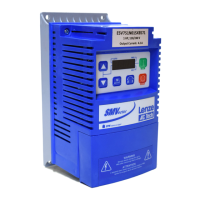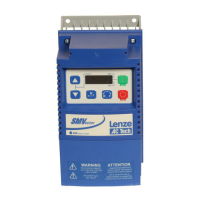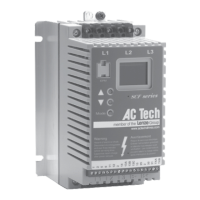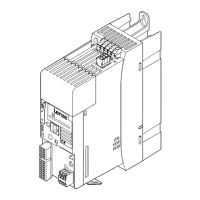What causes undervoltage on DC bus in Lenze Inverter?
- TTrevor BlackAug 31, 2025
If the Lenze Inverter shows 'Undervoltage on DC bus', the mains voltage might be too low. Check the mains voltage to ensure it is within the required range.

What causes undervoltage on DC bus in Lenze Inverter?
If the Lenze Inverter shows 'Undervoltage on DC bus', the mains voltage might be too low. Check the mains voltage to ensure it is within the required range.
What causes overvoltage on DC bus in Lenze SMD DC Drives?
If you see 'Overvoltage on DC bus' on your Lenze DC Drive, it could be due to the mains voltage being too high, so you should check the mains voltage. It could also be caused by an excessively short deceleration time or the motor operating in generator mode. To resolve this, increase the deceleration time or use a dynamic braking option. Another cause could be earth leakage on the motor side, so check the motor/motor cable, separating the motor from the controller.
What causes motor overload in Lenze SMD DC Drives?
If your Lenze DC Drive reports 'Motor overload (I2t overload)', the motor may be thermally overloaded due to impermissible continuous current or frequent/long acceleration processes. Check the controller selection and the setting of c20.
How to fix stop error on Lenze SMD?
If the Lenze DC Drive displays 'Stop (outputs U, V, W inhibited)', it indicates a LOW signal at terminal 28. Set terminal 28 to HIGH to resolve this.
What does external error mean on Lenze DC Drives?
If your Lenze DC Drive reports 'External error', it means the digital input “TRIP set” is active. You should remove the external error to resolve this.
What causes faulty auto-TRIP reset on Lenze SMD DC Drives?
If your Lenze DC Drive displays 'Faulty auto-TRIP reset', it means there have been more than 8 errors in 10 minutes. The solution depends on the specific error.
What to do if Lenze SMD have overvoltage on DC bus?
Overvoltage on the DC bus in Lenze DC Drives may be due to several reasons. It can be caused by mains voltage being too high (check mains voltage), an excessively short deceleration time or the motor operating in generator mode (increase deceleration time or use dynamic braking option), or earth leakage on the motor side (check motor/motor cable, separating the motor from the controller).
What causes Lenze SMD DC Drives to have earth fault?
An earth fault in Lenze DC Drives may be caused by a grounded motor phase (check motor/motor cable) or excessive capacitive charging current of the motor cable (use shorter motor cables).
What to do if Lenze DC Drives show external error?
If your Lenze DC Drive shows an external error, it means the digital input “TRIP set” is active. Remove the external error to resolve this.
What causes single phase fault in Lenze DC Drives?
If your Lenze DC Drive is showing a single phase fault, it means a mains phase has been lost. Check the mains voltage.
| Product series | SMD |
|---|---|
| Category | DC Drives |
| Field current | Up to 2 A |
| Control mode | Speed, torque, position |
| Protection | Overcurrent, overvoltage, overtemperature |
Details items included with the inverter.
Critical information regarding product receipt and checks.
Overall safety guidelines for handling and operation.
Specifies intended use and compliance with directives.
Guidelines for safe mechanical and electrical installation.
Safety considerations during the operation of the inverter.
Explains symbols and signal words used in the manual.
Lists relevant standards and environmental operating conditions.
Details electrical specifications and output current ratings.
Covers physical mounting and dimensions of the inverter.
Details wiring, EMC requirements, and connection diagrams.
Explains how to set and adjust operating parameters.
Describes the EPM for storing and managing parameter settings.
Details the codes, names, and functions of various parameters.
Defines how data is mapped for CANopen communication.
Specifies the mapping of Receive PDO data.
Specifies the mapping of Transmit PDO data.
Guides through the initial setup for CAN communication between controllers.
Explains status codes and common basic operational faults.
Lists specific error codes, their causes, and remedies.
Addresses faults related to CAN communication timeouts and initialization.
Covers faults related to short circuits, overloads, and voltage issues.











